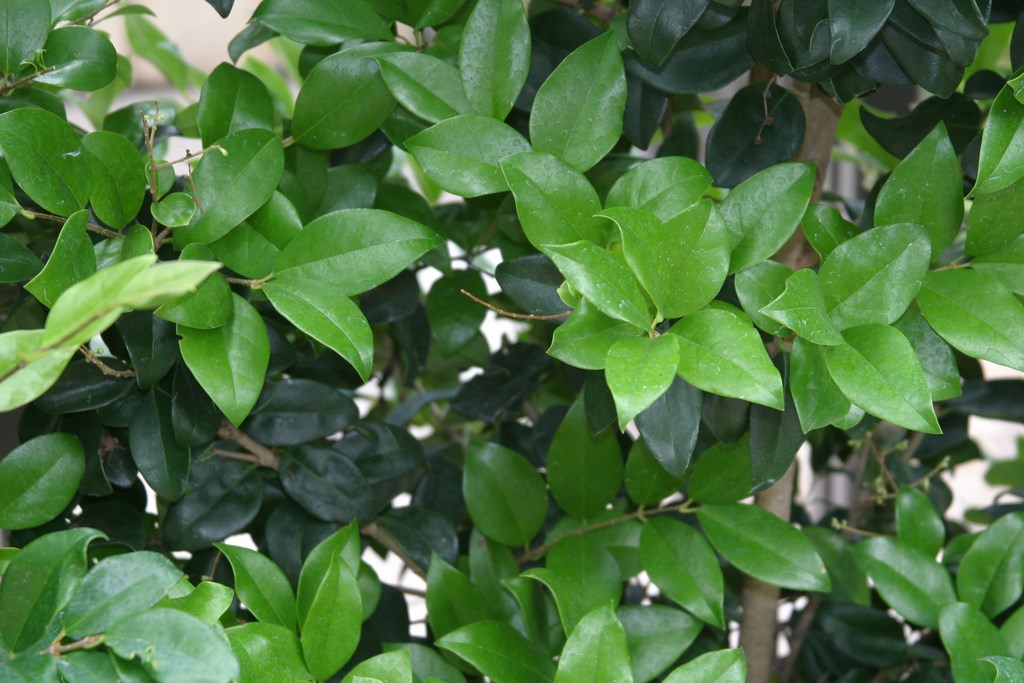Simple Green
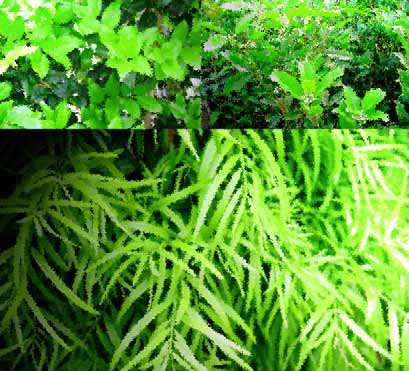
It’s that time of year when our thoughts begin turning to the beautiful colors of the fall – and the subsequent bareness of winter.
Whether you’re in the coldest northern reaches or enjoy the relative warmth of the Sunbelt, we all are aware that fall is a transition to a time when the annuals will fade once and for all and the deciduous plants will drop their leaves.
But I propose that it doesn’t have to be so – or at least that we can minimize the seasonal holes in our gardens through thoughtful use of evergreen trees and shrubs. These are the most abundant of all plant types, after all, and the bones of many a successful landscape.
By focusing on evergreen trees and shrubs with a variety of textures and green colors, we can develop landscapes that provide our clients with feelings of warmth year ’round, even in the dead of winter.
GETTING STARTED
For some of us, the first thought that comes to mind for winter landscapes is a reliable, solid-green hedge, but I’d argue that this is a solution with little to no character – and that needn’t be the case. There’s a vast array of basic evergreen shrubs and trees to choose from that can act as backdrops, fillers or even specimens, while smaller and lower evergreens can be used as space dividers or to define visual breaks in a border.
Each setting is different, of course, so there’s no universal answer. That in mind, I usually start on winter-proof landscapes by making a list of all of the basic green plants I might use. The list is soon narrowed in accordance with style and the client’s specific likes and dislikes. (Personally, I tend to avoid large-leaf plants or very lacy or smaller-leaf plants: No matter the style, these tend to stand out a bit too much.)
If time allows, I take my clients to the nursery and show them the different types of mainstream and basically nondescript green plants we might use. I note carefully that, even though many of the types of shrubs in this category may not be particularly appealing to them, these plants can be used to emphasize other plants that may be more important to the overall look of the landscape.
I look at these as utilitarian plants, as the worker bees of the garden – plants that cover walls, camouflage unsightly structures or provide a break from one part of the garden to the next. Bottom line: Sometimes you just need something that is simple, green, and doesn’t flower in a way that anyone will notice.
You might, for example, select a Podocarpus as a hedge plant. (For those who aren’t familiar with this one, it’s a basic, light-to-medium-green shrub that can be shaped – depending upon the variety – into a hedge, a single plant or even a tree.) Your clients may or may not like the Podocarpus itself, but you should be able to persuade them that it will serve well as a backdrop to more intricate planting in the foreground.
It’s kind of like putting a coat of paint on a wall: Maybe you want the wall to stand out on its own, or maybe you want it to fade into the background or be a foil to emphasize furniture or artwork you plan to place in front of it. You’re doing the same thing in the garden, with the specifics depending upon the setting and what you are trying to achieve.
GREEN CHOICES
I’ll come back to how to use these plants in a moment, but first I’d like to give some examples of some basic green plants that I use in the southern California area. (I hope my colder climate friends will forgive me if I don’t include their favorites!) Most of these selections have medium-sized leaves and work with any planting style.
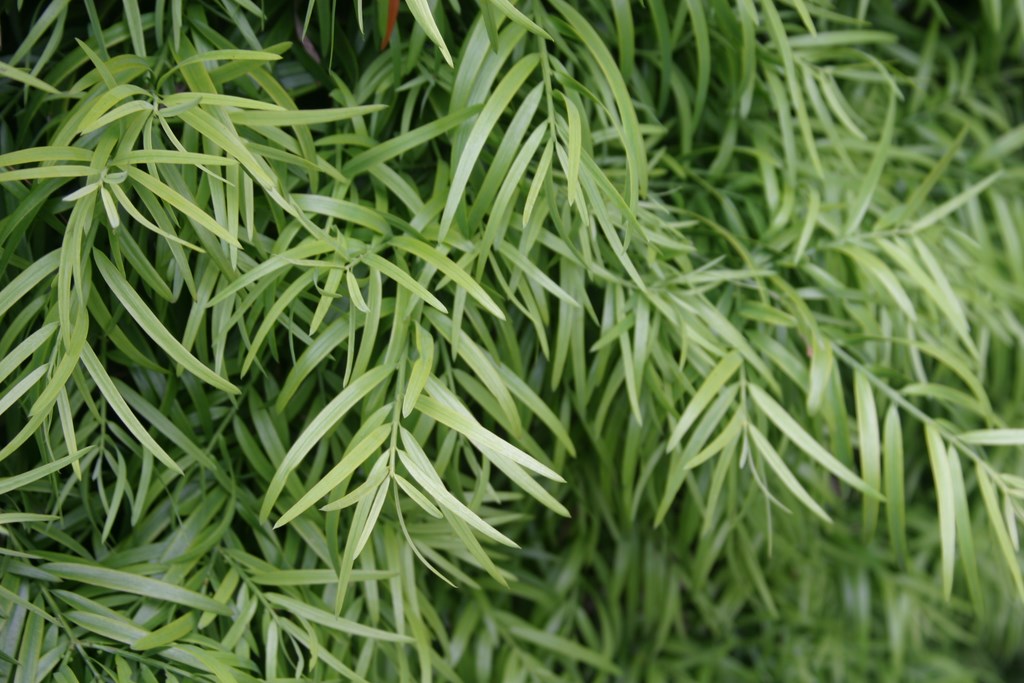
[ ] Ternstroemia gymnanthera. This darker-green-leafed shrub usually grows to a height of three or four rounded feet. Its big advantage is that it prefers shade, which makes it perfect for filling in underneath a tree.
[ ] Ligustrum japonicum (Wax-Leaf Privet). Privets aren’t particularly well loved by most people I’ve encountered, but even so, most of my clients are comfortable with its inclusion in their landscapes. It has dark-green leaves and insignificant flowers and fruit, can easily be pruned into a hedge or tree and is generally a hardy selection.
[ ] Buxus (Boxwood). There are a lot of different varieties of boxwood that are familiar to most of us in the form of manicured hedges. These shrubs are available in shades from dark to light green and can be left natural or pruned heavily. Check your garden guides for one that fits your specific needs.
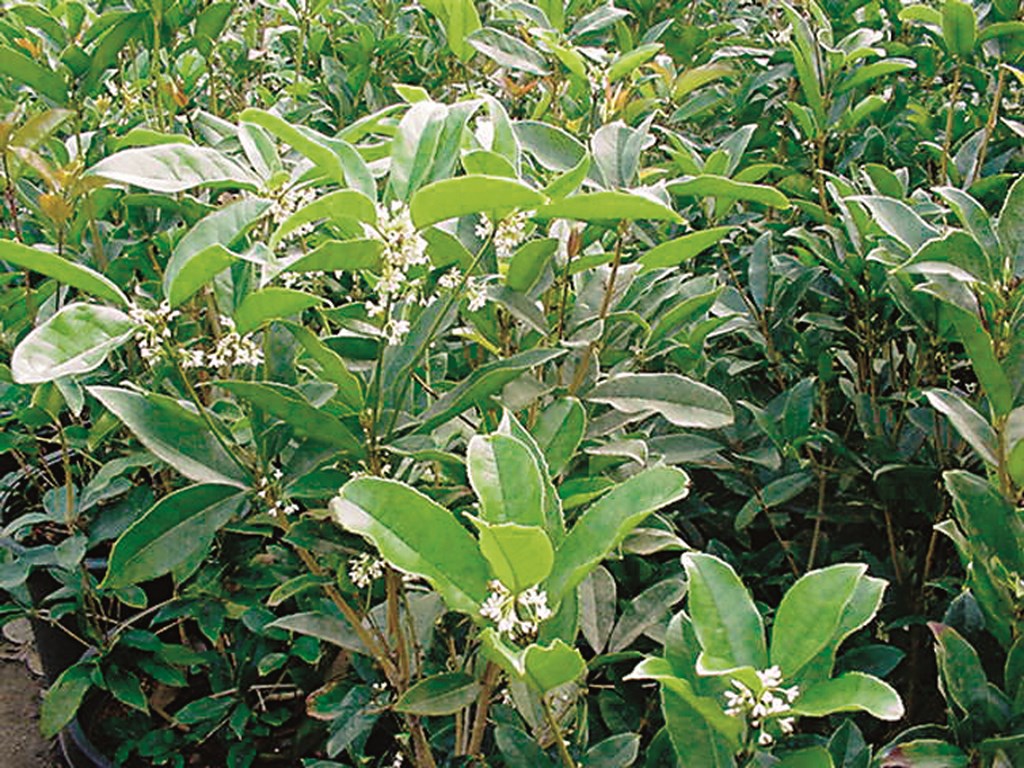 [ ] Osmanthus fragrans (Sweet Olive). I’ve discussed this plant before. Its best feature is its incredible apricot fragrance (best detected in late spring and summer in my area). Medium-green leaves allow it to blend well into most landscapes. In my experience, it’s a slow grower. But with its fragrant flowers, I think it’s worth the wait.
[ ] Osmanthus fragrans (Sweet Olive). I’ve discussed this plant before. Its best feature is its incredible apricot fragrance (best detected in late spring and summer in my area). Medium-green leaves allow it to blend well into most landscapes. In my experience, it’s a slow grower. But with its fragrant flowers, I think it’s worth the wait.
[ ] Coprosma repens. The shiny leaves of this medium-green plant may make it stand out a little more than do the others listed here. Depending upon the rest of your palette, though, it may be just the medium-sized shrub you need to fill in a sunny border spot.
[ ] Griselinia littoralis. This is a new medium-green, medium-size plant I discovered when flipping through my Sunset Guide. As is my practice, I ordered one from my favorite nursery and placed it in my own yard – and it’s thriving in a slow-going, nondescript way that calls little attention to itself. As Sunset says, “Always looks well groomed” – which I think says it all!
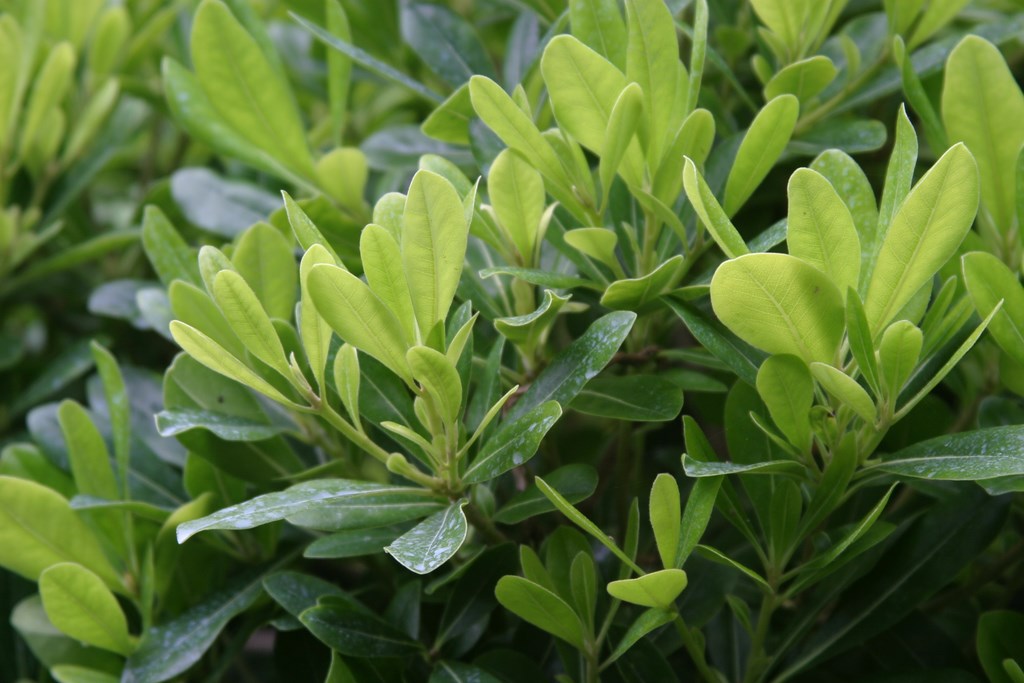
[ ] Pachysandra. I know this is a groundcover, but I’ve included it in this list as a plant that can be used for its basic green color, particularly when there’s plenty of perennial or annual color surrounding it. It works great in the shade and, with its dark green foliage, makes a nice green mat.
PRACTICING GREEN
I recently installed the foundation plants for a border along a driveway. Among the plants I used were Abutilon (with yellow and mauve flowers), Oakleaf Hydrangeas (white), Roses (many colors), Jasmine Vines (pink), colorful perennials in the foreground and an Angel’s Trumpet (peach) to one side. These plants all call attention to themselves in one way or another, but they work well when blended together.
When I reached the point where I was spacing all these plants out on paper, I recognized that I still had areas to fill. The homeowner liked the selection of plants we already had and hadn’t anticipated more, but I informed them of the need and suggested going with Privet or Osmanthus.
We selected Osmanthus fragrans because its leaf color blended with the rest of the plants without standing out. We also chose it knowing that it would fill the holes in the landscape quite nicely over time and would also cover a wall while emphasizing the foreground plants that were more important to them. The Osmanthus also provides a green backdrop in the winter, when the Roses, Hydrangeas and perennials are without their leaves.
In other words, the basic green plants creates a balance between complete deciduousness and constant greenery while providing a background for sculptural plants, artwork and other features that make landscapes beautiful straight through the winter.
Stephanie Rose wrote her Natural Companions column for WaterShapes for eight years and also served as editor of LandShapes magazine. She may be reached at [email protected].











